How to Get Rid of Grubs in Your Yard (9 Methods)
-
Pete Ortiz
- Last updated:

Grubs have C-shaped, white, and soft bodies with legs attached close to their heads. They live in the soil and feed on the roots of grass and plants and other decaying organic matter. Grubs grow into different insects, like June beetles, Japanese beetles, and European chafers. Despite how tiny these larvae are, you wouldn’t believe how much damage they can cause in your yard!
With a large enough population, these tiny creatures will feed on the roots of your grass or completely detach them from the grass, causing dry patches in fields due to insufficient water and nutrients being transported from the soil to the grass once the roots have been eaten off or damaged by the grubs.
If you have grubs, you have a problem that needs solving. In this article, we go over how to get rid of grubs.
How to Get Rid of Grubs in Your Yard
To know if grubs exist in your yard, take a spade, and cut a square foot about 3–4 inches deep into the soil. Pull the soil back and inspect it for grubs. You will also be required to count the number of grubs you find on the potion of soil. If you count more than five, your yard is most likely infested with them. However, if the soil contains less than five grubs, there may be a different problem that is unrelated to grubs.
Once you have gathered enough evidence of the existence of grubs in your yard, your next step is to look for a solution to your problem. Below are some methods that you may use. The list includes natural and chemical DIY methods.
The 9 Methods on How to Get Rid of Grubs in Your Yard
1. Introduce Natural Grub Eaters to the Yard
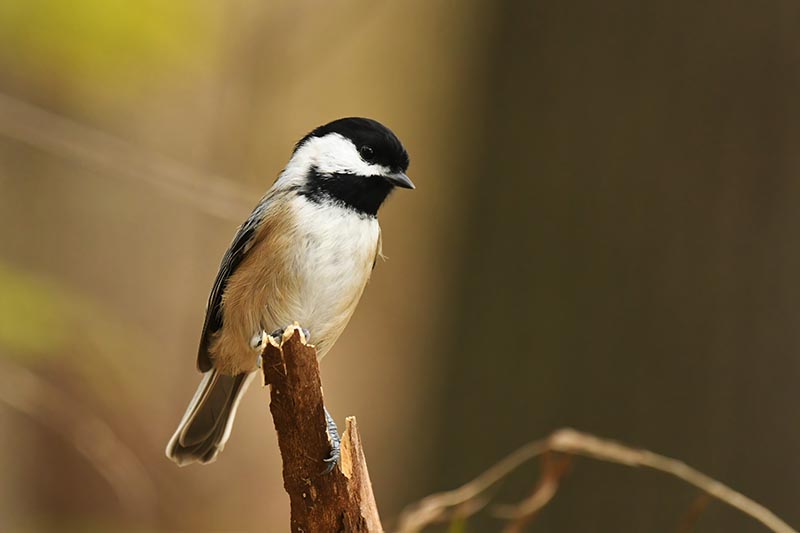
Raccoons, skunks, and moles can be termed as natural grub eaters; however, they are very destructive and will end up damaging your yard, adding unexpected expenses to your budget.
However, you can allow other lesser destructive grub eaters, like chickadees, blue jays, and robins. For these birds to notice your yard and give it a visit, you need to create a conducive environment like having birdbaths, birdfeeders, and birdhouses.
Alternatively, you could opt for backyard chickens that enjoy picking up grubs.
Even though the birds may destroy existing vegetable gardens or potted plants, it is a less toxic method, as no chemicals are required, and you do not have to worry about allergies and poisoning for your pets and kids.
2. Dethatching the Yard

Dethatching is the removal of dead grass from the yard purposely to aerate the soil. The dead grass always provides a thick layer on top of the soil, creating a conducive shelter for grubs. Once the grass has been removed, the yard becomes uncomfortable for the grubs’ existence.
To be clear, dethatching will not kill the grubs, but it will make their existence in the soil less bearable.
3. Do Not Water the Yard
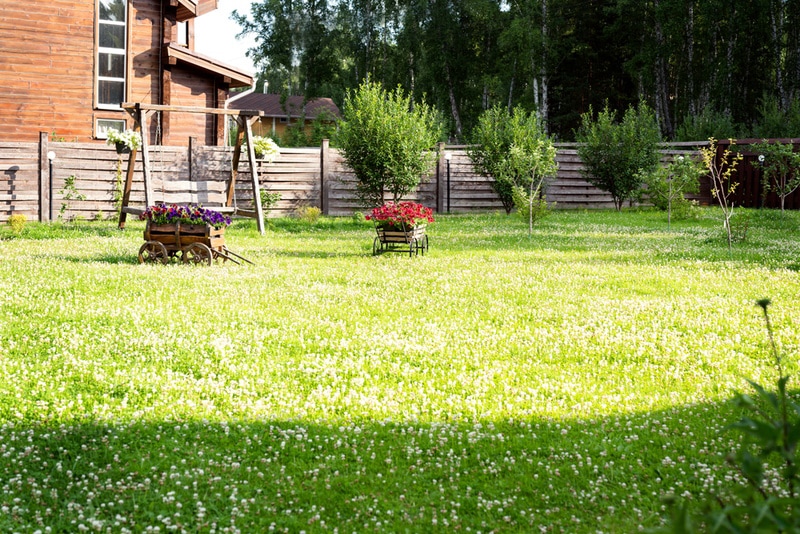
The essential requirement for the survival of a grub is a moist environment. Therefore, the more you water a yard infested with grubs, the more you create a conducive environment for their survival.
To counter this, do not water your yard for a few weeks to reduce the grub population. Your grass will regain its health when you shall begin watering again after the grub problem is gone.
This method is also friendly and less toxic, but it will not work during the rainy season because even if you stop watering the yard, the rain will do it for you.
4. Use Beneficial Nematodes
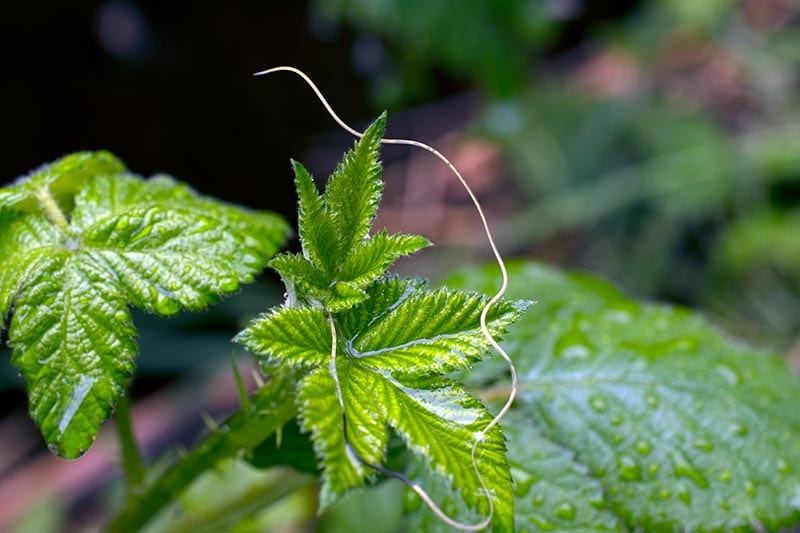
Beneficial nematodes are parasites that target and kill insects when released into the soil. The nematodes often enter the pests’ larvae through the mouth, respiratory openings, or anus. Once inside, the bacteria within leave their bodies and enter the insect.
This bacteria will multiply, causing the insect’s rising temperature and blood poisoning, leading to death. The dead insect now becomes the food for the nematodes to feed on and multiply. Once there is no more food to feed on, the nematodes exit the insect’s body to search for the next host.
When purchasing beneficial nematodes, note the following:
- Nematodes should be alive and shipped refrigerated.
- They should be used immediately after you open the package.
- The spray jar should be completely clean without any form of residue from the previous chemicals you sprayed with the same sprayer.
You can easily purchase beneficial nematodes from your nearest gardening store.
5. Use Milky Spores
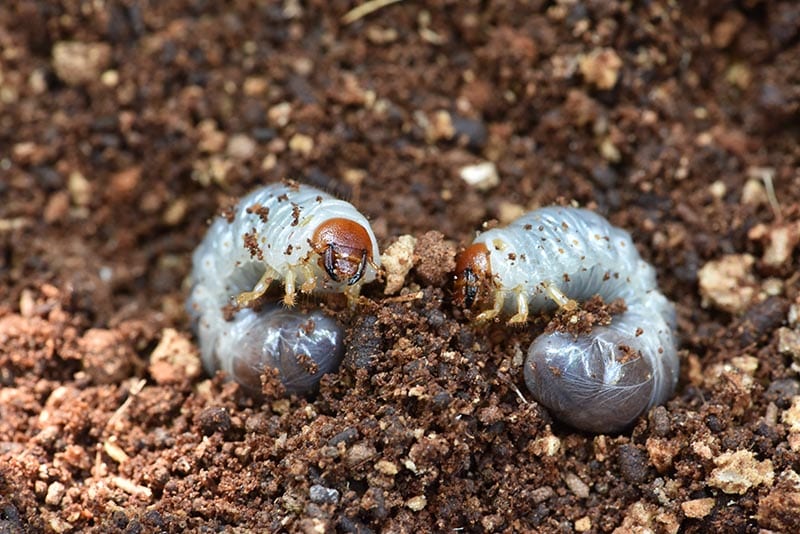
Milky spore is a bacterial disease that kills Japanese beetles at their larval stage. It is considered one of the most effective ways of killing grubs.
Once introduced into the soil, the grubs will feed on them. Their bodies will turn milky and eventually burst and die. The bacteria will then exit the grub’s body and look for their next host.
It is believed that if you expect great results from a milky spore, you may need to apply it a few times in 2 to 3 years, after which they will control the existence of grubs in your yard for over 15 years.
Just like any other chemical used to manage pests, there are certain precautions that you need to adhere to. For instance, you need to take note of the environmental conditions, like soil type, pH, structure, and humidity, since the milky spores are believed to be very sensitive.
Colder seasons are not the perfect times to apply the bacteria. Consider using the milky spore in your yard when the temperatures are between 60° and 70 °F. Also, it is only with the existence of the grubs that the milky spores will get established and spread in the yard.
6. Make Use of Neem Oil
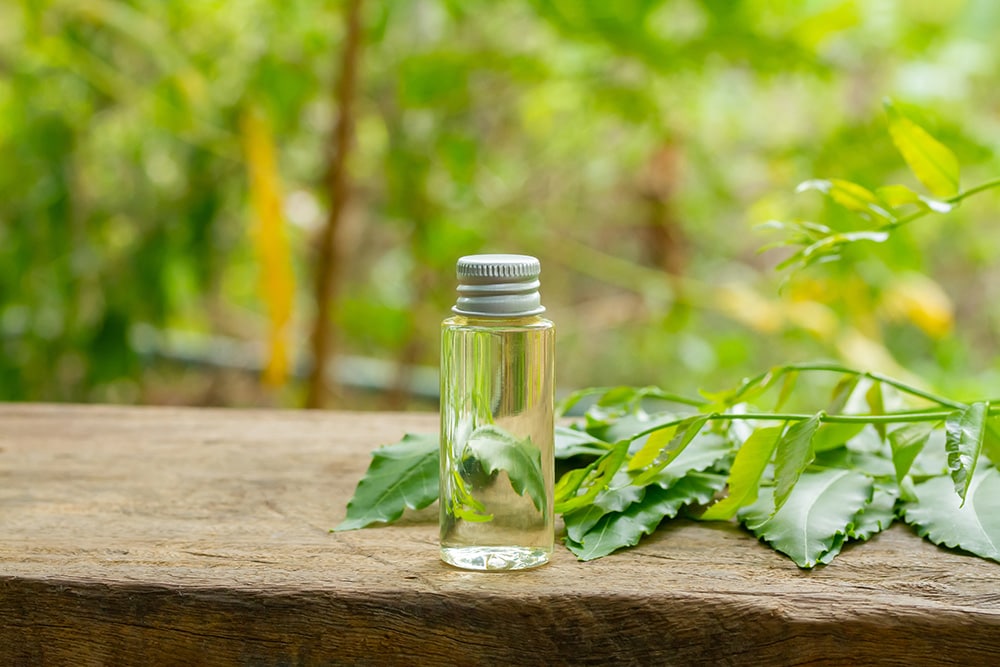
If you are looking for the best alternative to commercial pesticides, look no further than neem oil. Neem oil is known for eliminating aphids, beetles, grubs, and mealy bugs. It will deter grubs in your yard from feeding, growing, and laying eggs. All you need to do is add a little water according to the instructions and spray it in your yard.
7. Use Borax Cleaning Agent
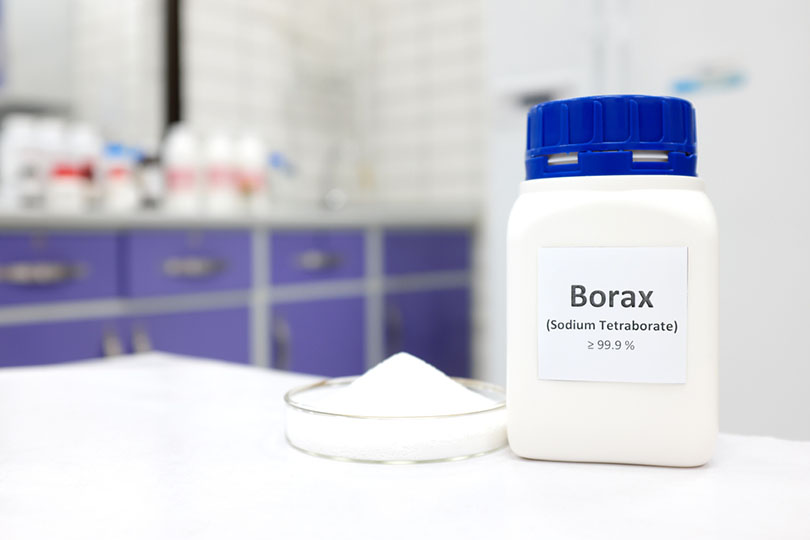
Borax is often used as a detergent in laundry. At the same time, it can also be used as an alternative to pesticides for killing grubs.
However, it contains boron, an agent that tends to build up in the soil. The boron can kill the grass in your yard, especially if used in excess. Therefore, to use borax effectively, add one tablespoon to a spray bottle containing warm water. Also, avoid using it frequently, especially on sensitive parts of the yard, like the flower bed or vegetable garden.
8. Seed, Fertilize, and Allow Your Yard to Grow
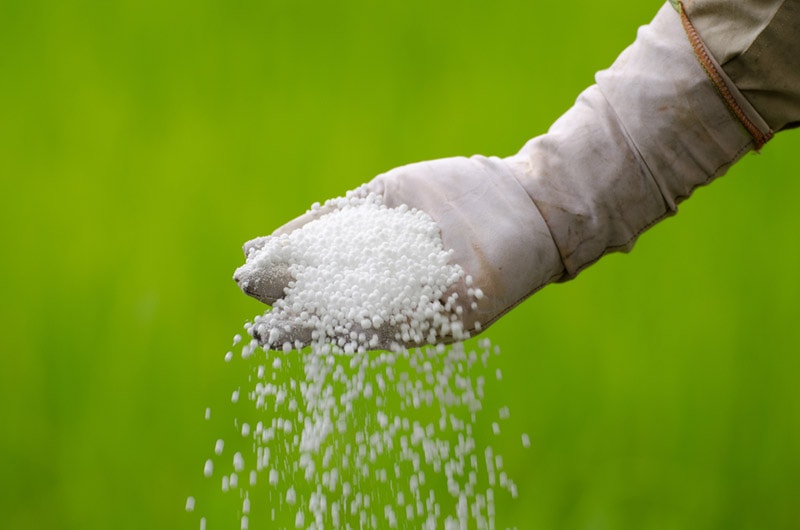
As stated earlier, you make the yard uncomfortable for the grubs by ensuring you do not water it. This will kill the grubs and the existing laid eggs. Now to ensure the mature beetles do not lay any more eggs for fresh grubs, make sure to seed the yard, add some fertilizer, and allow it to overgrow.
The damage caused by the grubs and the drought will be repaired, and the overgrown yard will not create a conducive environment for the mature beetles to lay any more eggs.
9. Purchase Carbaryl
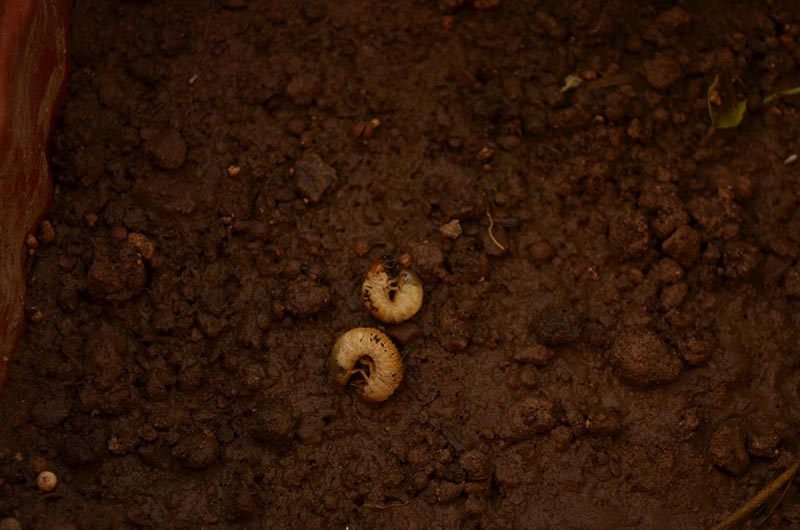
Carbaryl is a carbamate compound known for killing grubs, especially the European chafer grub. The killing takes place between the 10th to the 14th day of application.
However, as much as it is effective in killing European chafer grubs, it can be very toxic to beneficial insects such as honey bees. Always make sure to read the usage instructions before use.
Another chemical similar to carbaryl is Trichlorfon, which is also effective and kills grubs within 1 to 3 days of application.
Signs That Grubs Exist in Your Yard
You can suspect their presence in your yard even without setting eyes on them. Below are other signs you could consider looking out for before assuming that your yard has been infested with grubs.
Brown and Yellow Patches on Your Grass
Random brown patches in your yard are a sign that pests may be damaging the grass’s roots, preventing them from transporting the required water and nutrients to keep the grass green.
After the browning of the grass, the second stage is the yellowing of the grass. Yellow grass means the grass is either dead or almost dead. When grubs continue feeding on the roots of the grass, the grass begins to turn yellow, feel spongy, and roll back when touched. Eventually, your yard starts looking like it has been stricken by drought.
However, do not always assume that grubs are the only reason grass may turn brown; other possibilities, like drought or underwatering, may also cause the grass to turn brown.
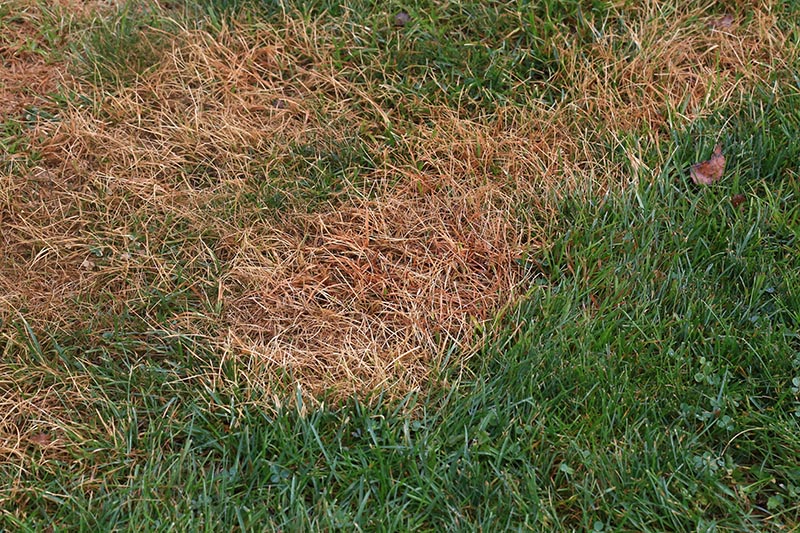
Inability to Remedy Damaged Grass Situation
Suppose you try to remedy the drought situation in your yard by regularly watering the grass, and there is no change. The yard could be infested with grubs, and the grassroots are already damaged beyond recovery.
Presence of Other Pests
Suppose you notice an increase in the number of other pests in that yard; they must be coming to feed on the grubs. Grubs are known as delicious delicacies for pests like skunks and raccoons. Where grubs exist, these pests will continuously visit the place; they may even damage your yard in the process.
Therefore the next time you see raccoons and skunks in your yard, do not call pest control services thinking you have a raccoon problem; the problem could be your yard is infested with grubs.
Lots of Moths or Beetles Flying Around
Grubs are small larvae that grow into different insects like moths or beetles. Therefore, if you see moths or beetles flying around in your yard, they are a sign that the grubs existing in the soil have finally matured and are about to lay more eggs for a more significant infestation.
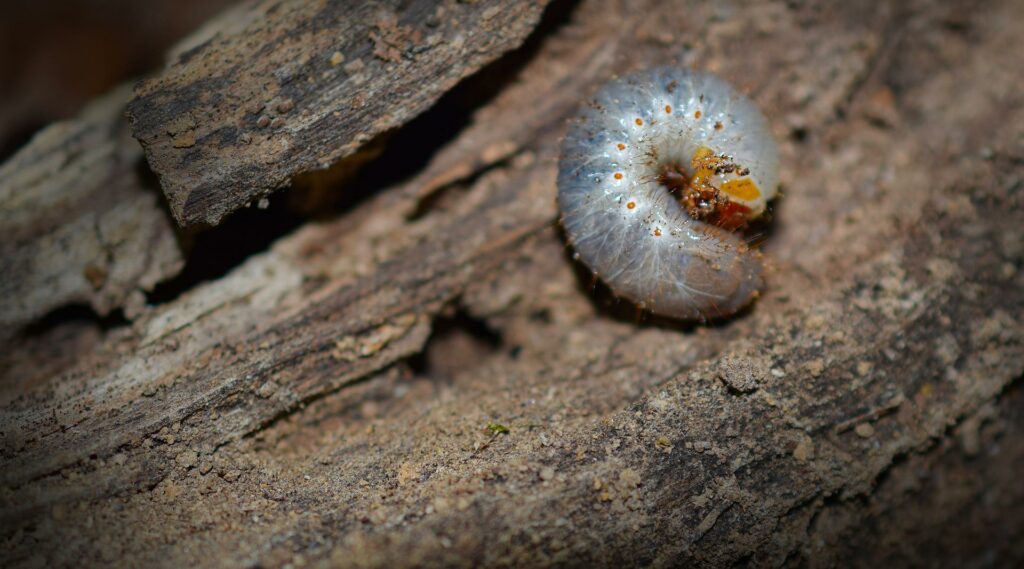
Conclusion
Grubs are larvae of June beetles, Japanese beetles, and European chafers. They are small in size but can be very destructive. To know you have them in high population in your yard, you will notice signs like brown and yellow patches on your grass, yellow grass, inability to remedy damaged grass situation, availability of other pests, and lots of moths or beetles flying around.
To get rid of grubs in your yard, you can use pesticides or make use of natural solutions like introducing grub-eating pests. You could also choose not to water the yard until all the grubs are dead.
Featured Image Credit: J.J. Gouin, Shutterstock
Contents



